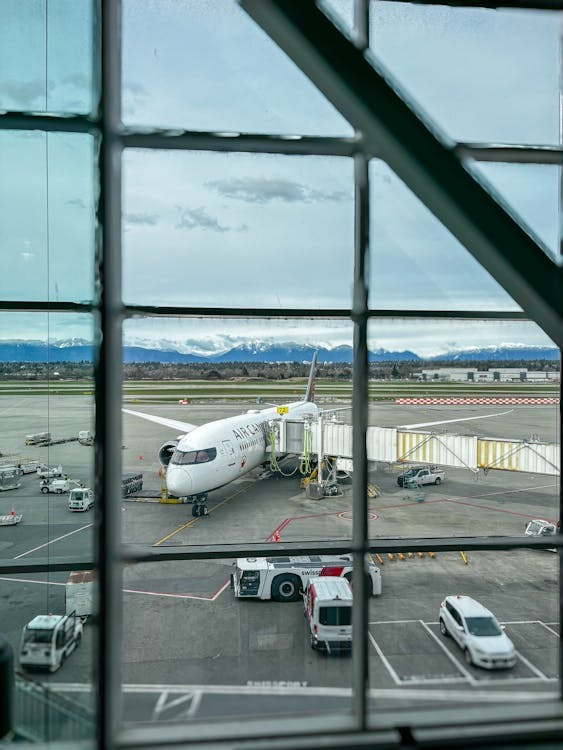Behind every smooth-running airport operation lies an intricate network of ground support equipment (GSE) that keeps aircraft safe, maintained, and ready for flight. These specialized tools and machines handle everything from routine maintenance to critical ground operations.
Here are four important pieces of ground support equipment.
Contents
1. Aircraft Towing and Pushback Tractors
The fascinating world of aircraft ground operations centers around the remarkable vehicles known as aircraft towing tractors. These essential machines come in various sizes, from compact units designed for private aircraft to massive powerhouses that effortlessly move the largest commercial airliners. The modern pushback tractor represents the pinnacle of engineering achievement, incorporating cutting-edge features like electric powertrains and sophisticated remote-control capabilities that transform ground operations. The true distinction of these tractors lies in their advanced technological integration. Contemporary models feature comprehensive visibility systems that provide complete situational awareness, advanced coupling mechanisms that ensure secure connections, and intuitive diagnostic displays that monitor every aspect of operation. The operation of these sophisticated machines involves extensive training and preparation, as moving aircraft weighing hundreds of tons demands unwavering attention to safety and precision. The methodical procedures and careful attention to detail ensure the safe movement of aircraft across busy airport environments.
2. Ground Power Units (GPUs)
Aircraft parked at gates require substantial electrical power to maintain their systems, and ground power units serve as the backbone of this critical infrastructure. These indispensable units deliver consistent, carefully regulated electricity that maintains aircraft systems during various ground operations, including maintenance procedures, passenger boarding, and pre-flight preparations. The use of GPUs significantly reduces the need for auxiliary power unit operation, resulting in decreased fuel consumption and a quieter airport environment. The fundamental aspects of GPU operation contribute to their reliable performance and efficient operation. Contemporary GPU models may incorporate advanced monitoring systems that observe operational patterns and anticipate maintenance requirements, ensuring continuous, reliable service throughout the demanding airport schedule. The integration of smart technology has transformed these essential units into proactive components of airport infrastructure.
3. Hydraulic Power Units
Hydraulic power units stand as critical equipment in the testing and maintenance of aircraft systems. These specialized units deliver precise hydraulic pressure and flow rates necessary for comprehensive testing of various aircraft components, from landing gear mechanisms to flight control surfaces. The applications of these units span from routine maintenance checks to complex diagnostic procedures. The availability of mobile units provides the flexibility needed for diverse maintenance scenarios, while permanent installations create stable foundations for regular maintenance operations. The combination of precision engineering and operational versatility makes these power units fundamental components in modern aircraft maintenance facilities.
4. Aircraft Maintenance Stands and Platforms
The importance of safety in aircraft maintenance becomes evident in the design and implementation of maintenance stands and platforms. These meticulously engineered structures enable secure access to every part of an aircraft, incorporating features such as variable height adjustment, multiple work levels, and integrated fall protection systems. The innovative designs of modern maintenance equipment successfully combine the benefits of lightweight construction materials with unwavering structural stability. These essential platforms incorporate ergonomic considerations that enhance worker comfort during extended maintenance procedures. The integration of non-slip surfaces, strategically placed guardrails, and tool storage areas creates an efficient and secure work environment. Advanced materials and engineering techniques have resulted in platforms that can be quickly repositioned while maintaining absolute stability during use. The modular nature of contemporary maintenance stands allows for customization to accommodate different aircraft types and maintenance requirements, providing versatility without compromising safety or functionality.
Conclusion
The seamless operation of modern aviation involves these four essential pieces of ground support equipment. From the powerful towing tractors that guide aircraft across the tarmac to the precise hydraulic units that keep systems in check, each piece plays a vital role in maintaining safety and efficiency. As aircraft technology continues to evolve, so too does the ground support equipment. For airports and maintenance facilities, selecting appropriate equipment represents more than meeting immediate operational needs. It embodies a long-term investment in the future of aviation operations. The path to operational excellence in this field demands thorough evaluation of specific requirements and unwavering dedication to safety and efficiency standards.

